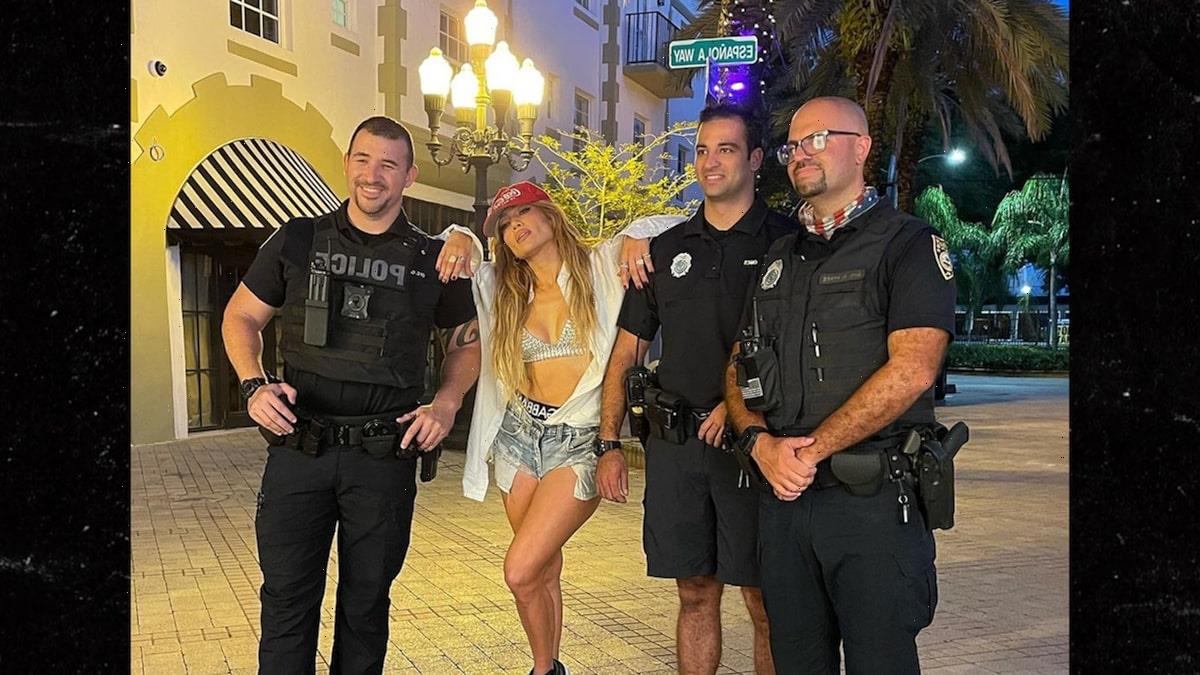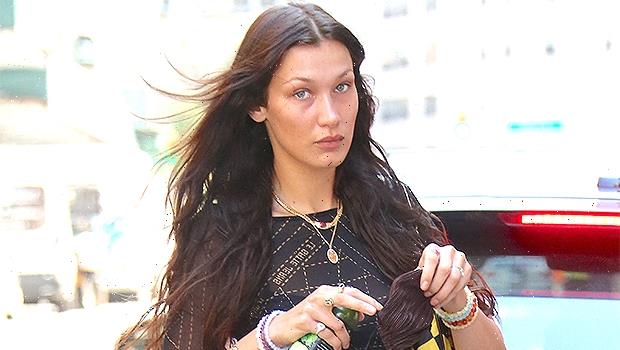Post-pandemic fashion is looking green.
With the pandemic putting a stop to in-person shopping, people were forced to get creative about their style while staying safe. Clothing resale apps like Depop and Mercari have gained momentum and popularized secondhand and vintage clothing, and even celebrities like Joaquin Phoenix and Tiffany Haddishtapped into sustainability by recycling red carpet looks.
However, experts believe sustainable fashion is here to stay. Laura Madden, a sustainable fashion expert and influencer, believes the isolating nature of the pandemic influenced some to reflect on the effects their choices have on the environment.
“More of us were stuck at home consuming information from our devices, and with the continuing growth of social media, there was just so much more information out there: more people speaking up unfiltered and unashamed about the impact of fashion on the environment,” Madden says.
Tiffany Haddish has re-worn her white Alexander McQueen gown, which she debuted at the 2017 premiere of her movie "Girls Trip," five times, most recently for People's 2021 Beautiful issue. (Photo: BROOKE NIPAR for PEOPLE)
Joaquin Phoenix makes good on his promise to outfit repeat – again
Post pandemic fashion: Expect brighter colors and comfier shoes
Claire Bates, a sustainable and circular fashion consultant, says that this awareness is “crucial” in the transition toward sustainability, adding that many are “consuming from a place of ignorance.”
“They often don’t understand how harmful fast fashion is or don’t fully get how producing and manufacturing new clothing uses so much energy and creates waste,” Bates says. Fast fashion companies like Forever 21 and Zara often rely on unethical practices such as underpaid labor and the production of excessive waste and energy to meet its high demands.
“When we start to have more knowledge, we shift our decisions about what we buy to align with our moral values,” says Bates.
Though both experts acknowledge more consumers are changing their shopping habits to be more ethical, not everyone is ignorant about the effects of fast fashion. Some simply cannot afford to be more sustainable because of the price point, and not all sustainable brands offer inclusive options for sizing and ability.
“Until the sustainable fashion movement really proves itself to be a better and more inclusive space than what we’re used to from fashion, then no one can expect the plus size community to move to sustainable fashion at lightning speed,” personal stylist and writer Aja Barber told Refinery29 last year.
Aside from its environmental impact, sustainable fashion has helped some find their personal and unique styles. Delilah Harvey, a sustainable TikTok influencer with over 27,000 followers, says that by being more intentional with what she purchases, there is now “more meaning” behind her wardrobe.
“We’re constantly fed this message that the more clothes we have, the happier and trendier we’ll be. But at the end of the day, sustainable fashion is really awesome because it enables you to be creative, express yourself and take care of the things you own,” she says. “Your clothes carry this story, and they’re more impactful that way.”
Creating a sustainable wardrobe sounds daunting, but it’s not as difficult as it seems.
For Emma Rogue, another influencer who opened up a sustainable vintage shop in New York Monday, it’s the allure of having pieces that nobody else will have while being ecologically conscious that makes sustainable fashion so meaningful to her.
With that in mind, experts and real people offered tips into how to affordably incorporate sustainable fashion practices into your everyday life.
Celebrities: Prince Charles hates ‘throwing anything away,’ talks sustainable fashion
Emma Rogue, a TikTok influencer with over 400K followers, opened a sustainable vintage shop, Rogue, in New York. (Photo: Emma Rogue)
Don’t underestimate hand-me-downs
Sometimes, the best clothes aren’t in stores. Harvey says you might find some hidden gems in your family members’ closets.
“I will totally raid my parents’ closets and find some really cool stuff. For example, my dad had these jeans from the ’70s and they’re Levis with eye patches stitched on the butt,” Harvey says. “I love them and I wear them all the time.”
Delilah Harvey says she loves hand-me-downs. She is photographed here wearing her dad's jeans from the 70s paired with her mom's old jacket. (Photo: Delilah Harvey)
Hand-me-downs also add sentimental value for Harvey.
“What drew me to fashion all those years ago was seeing clothing as a vessel for storytelling. That’s why hand me downs are so cool: You have a piece that has its own story and history.”
Buy secondhand clothing from local thrift shops or resale apps like Depop or Poshmark
The most sustainable fashion is secondhand fashion according to Madden.
“Fashion that is kept in circularity, that continues to be utilized and used for many years, is the most eco-friendly and ethical fashion we can invest in. And it’s something everyone can do,” she says.
Celeste Preston, who started thrifting to develop her style on a budget, says platforms like Depop, Instagram and Poshmark have made secondhand shopping more accessible.
“(These platforms) have allowed me to start my own little shop and bring unique pieces into others’ closets in a sustainable way while also promoting thrifting and sustainability anywhere I can,” she says.
Celeste Preston models an outfit she sold from her thrift and consignment store in an effort to be more sustainable. (Photo: Celeste Preston)
Roya Wolfe, who during the pandemic started her thrift Instagram and Depop pages, Planet Wolfe, says shopping secondhand is “one of the most sustainable choices you can make.”
“Thrifting allowed me to figure out what I actually wanted to wear and what looks stood out to me. You can also open your mind to different styles in that way” Wolfe says, adding that the majority of the clothes in her closet have been thrifted.
Roya Wolfe gathered unwanted clothing from her friends and classmates to sell at a pop-up thrift shop in her backyard. (Photo: Roya Wolfe/Planet Wolfe)
Stray from fast fashion and invest in sustainable brands
If you’re going to buy new clothes, opt for sustainable brands, or those that produce their clothing in an ecologically or socially responsible way. Madden notes fast fashion brands often profit off of unethical working conditions and excess waste that ends up going into landfills.
Some more sustainable suggestions include Everlane, Levi’s, Patagonia,Reformation, Outdoor Voices,Kotn,Pact,Wasi Clothing,Threads 4 Thought,Eileen Fisher, thredUP and Girlfriend Collective. Shopping at your local thrift shop or stores like Goodwill are also affordable and sustainable alternatives to cheap fast fashion.
Reviewed: 15 ethical and sustainable fashion brands that people are loving right now
Tired of your wardrobe? Try clothing swaps with your friends
Clothing swaps, or trading used clothes with others, offer a great alternative for pieces that you’ve grown out of. Before you throw something away or look to buy something else, Wolfe suggests texting your friends and offering to swap clothes.
“Clothing swaps are a great way to add new additions to your wardrobe in a sustainable manner,” says Wolfe, who created a local “Buy, Sell, Barter” group on Facebook. “If you ask a group of your friends to do a clothing swap, then you can really add some cool styles into your wardrobe in a form of payment that isn’t money.”
Restyle and reimagine the clothes you already have
Melissa Fraistat, 22, shows off the jacket, vintage jeans and crop top she thrifted. (Photo: Melissa Fraistat)
Instead of buying new clothes, it’s best to make the most of out of the clothes you currently have. For those worried about repeating the same outfits over and over again, Madden says accessories, like belts, shoes, scarves and hats, can spice up overused looks.
Melissa Fraistat, whose wardrobe mainly consists of secondhand clothing, adds that transforming the clothes you already own with DIY hacks can go a long way in the effort of being sustainable.
“I personally can’t sew, but I’ve seen people transform oversized dresses into two piece sets or even turning a shirt with stains into a bucket hat,” she says. “But, for example, I love to cut my long jeans into shorts in the summertime.”
Roya Wolfe hand-painted old denim jeans to sell on her thrift page, Planet Wolfe. (Photo: Roya Wolfe/Planet Wolfe)
Trying to save money? 7 fall fashion trends you can DIY on the cheap without shopping
For nicer events, try renting your formalwear
It can be wasteful to keep purchasing formal attire that will only be worn a handful of times for special occasions. A more ethical and eco-friendly alternative would be to rent dresses or tuxedos.
“If you’re attending a wedding and you’re only going to wear that dress once, it makes so much more sense to just rent it,” Fraistat says. “Even borrowing stuff from friends is a great alternative too.”
‘The gown that keeps on giving’: Tiffany Haddish re-wears her famous McQueen dress again
It’s OK to have unsustainable clothing— but make the most out of it
Though it’s always best to try to buy from sustainable brands, it’s OK to occasionally purchase that cute top or dress from a less ethical outlet. But when doing so, it’s best to make sure it’s something you’ll wear for a while.
“The big problem is the quantity we’re consuming,” says Bates. “The most sustainable item is the one you already own. So if you buy something from Forever 21 and keep it for 20 years and it’s genuinely something you re-wear all the time, there’s an element of sustainability in that.”
When contemplating buying a new piece of clothing, Rogue suggests asking yourself if you’d still wear it five years down the road.
“Assess its quality, timelessness, and don’t be afraid to invest in a staple piece. This will help you to start consuming consciously,” she advises.
Source: Read Full Article





